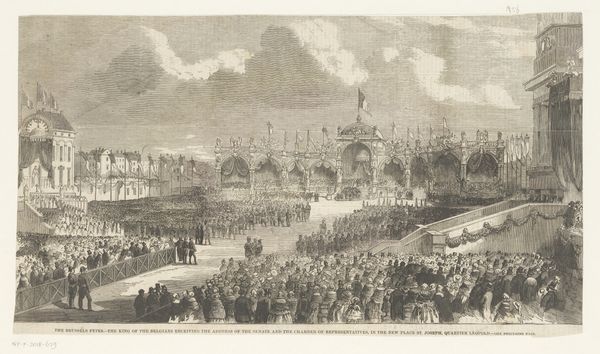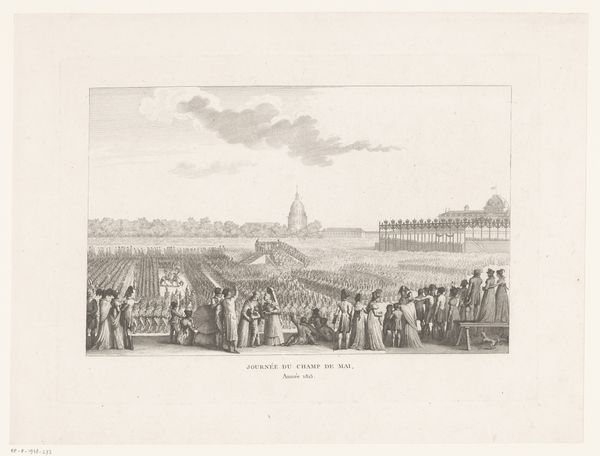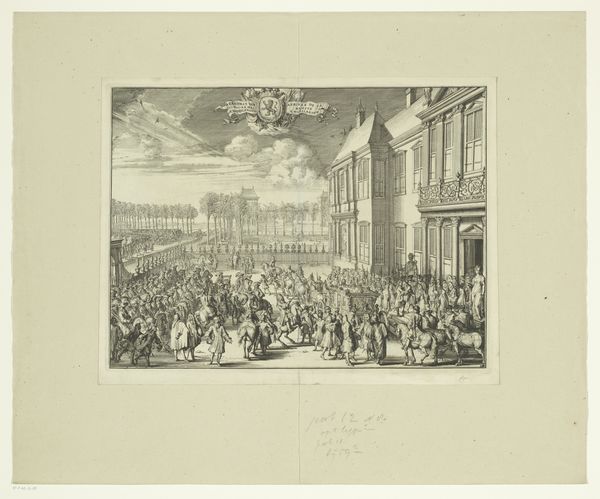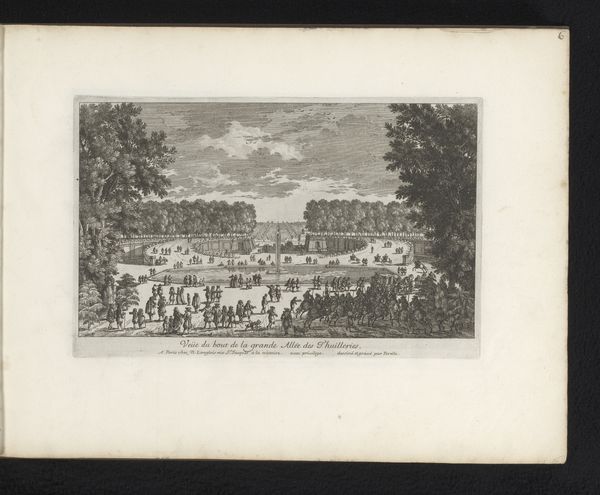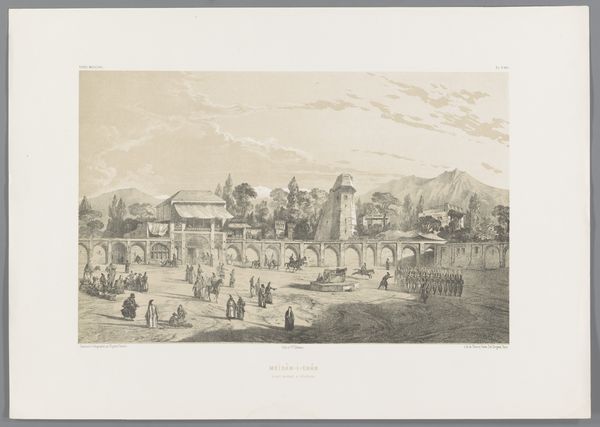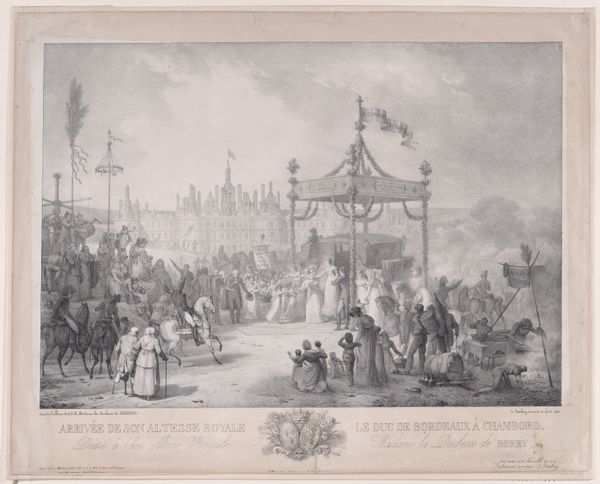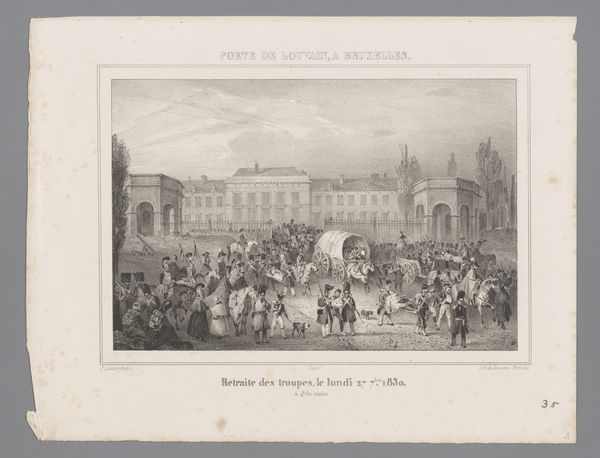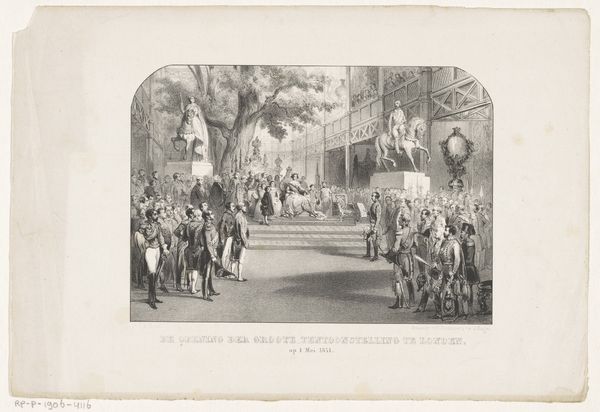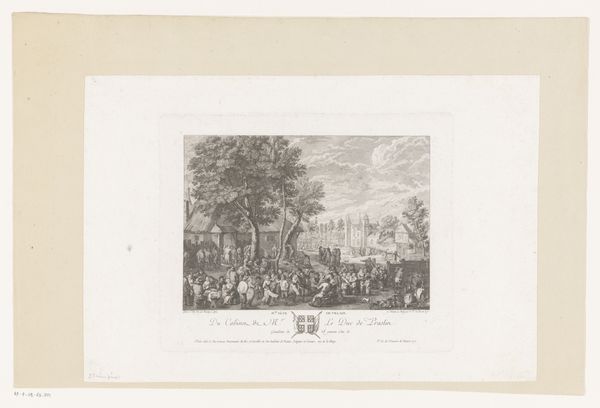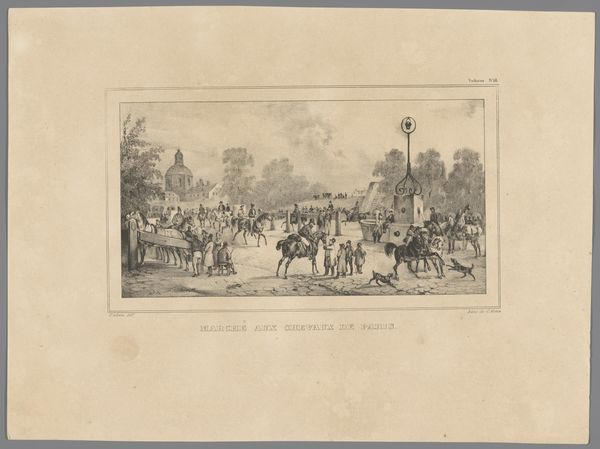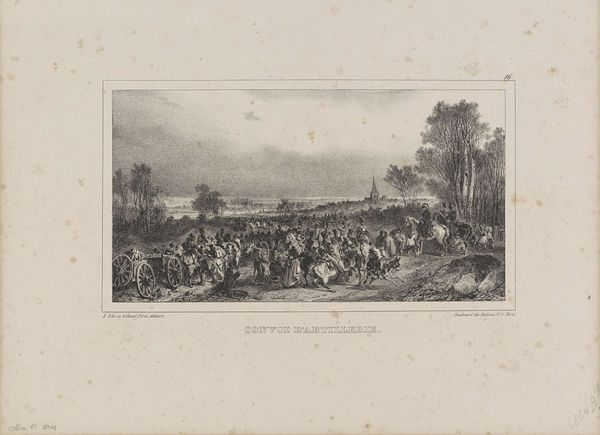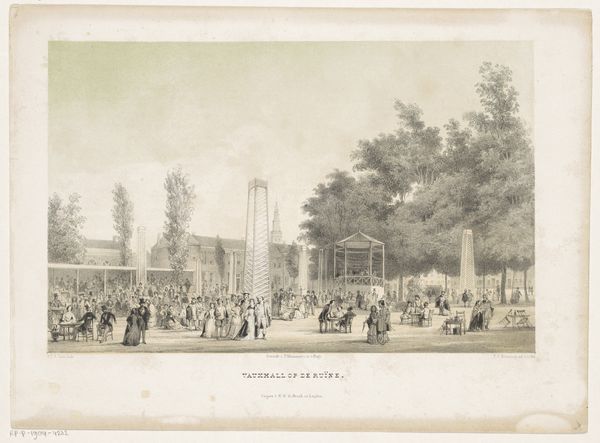
print, engraving
#
narrative-art
# print
#
landscape
#
romanticism
#
cityscape
#
genre-painting
#
engraving
Dimensions: height 464 mm, width 664 mm
Copyright: Rijks Museum: Open Domain
Curator: I'm drawn immediately to the dynamism in this image. A sense of excitement pervades. Editor: You've keyed into the perfect emotional descriptor. This is "Eerste treinrit op het spoor bij Brussel" (First Train Ride on the Brussels Railway), a print dating back to 1835 and credited to Paulus Lauters, currently held in the Rijksmuseum's collection. Curator: It reads as an incredibly hopeful image. I mean, look at that eager crowd; each figure feels like an embodiment of future possibility and technological promise. Note also the balance: the orderly city fading into soft, dramatic clouds that hover over a dense assembly of townspeople celebrating some industrial "revolution." I am quite drawn in by how the landscape informs the narrative! Editor: Precisely. Consider how railway openings became highly staged public events in the 19th century, laden with sociopolitical implications. Think of the rail lines not just as tools for transport, but symbols that were believed to embody societal progress and national unity. The train embodies forward momentum—quite literally— and visually that forward motion is enhanced by this technique known as linear perspective which drives the eye. Curator: Ah, but observe more closely at what's not apparent. I am particularly interested in who is—and who isn’t— present. Editor: The fashionable attire of many attendees indeed indicates a certain social stratum. These openings were about celebrating what "could be," but the benefits would hardly be immediately accessible to all. Lauters' choice to position the town in the background certainly offers fodder for pondering. What continuities from that period echo today in our perception of technological advancement? Curator: It is also an amazing chronicle, and it prompts deeper questions. It makes one think about our enduring impulse to locate pivotal junctures in time, and to remember how innovations become inextricably connected with what, and whom, they leave in their wake. It gives rise to endless considerations of continuity through visual records. Editor: I agree entirely. Looking closely, it illuminates so much about both the spectacle of progress and the subtleties of social narrative during its era, reminding us to always interrogate not just what we celebrate, but how and why.
Comments
No comments
Be the first to comment and join the conversation on the ultimate creative platform.
